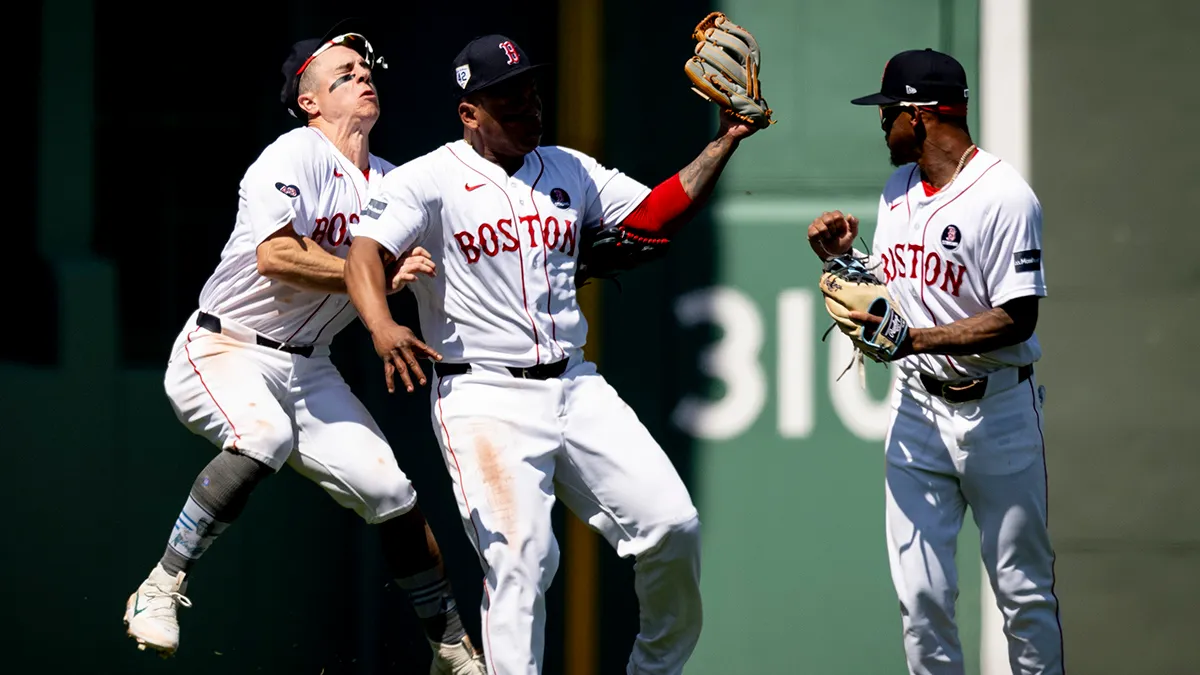If there's one signing that illustrates the frustration and risk of Chaim Bloom's hedging-for-the-future approach, it's James Paxton.
The Red Sox signed the left-hander to a one-year, $6 million deal this winter, even though he was rehabbing from Tommy John surgery and wouldn't pitch before August, if at all.
Any contribution they received would be a bonus, because they were most interested in securing a chance to lock him up in 2023 and 2024, with a rare two-year team option at $13 million annually.
Stay in the game with the latest updates on your beloved Boston sports teams! Sign up here for our All Access Daily newsletter.
Tomase: Red Sox in dreaded no-man's land after uninspiring deadline
The contract was hailed for its creativity, but it now appears to have been too clever by half, and it had real consequences for the 2022 season.
Paxton left his first rehab start in over a year Thursday after facing just two hitters. Diagnosed with a left lat strain, he will be examined on Friday to determine his next course of action. It's entirely possible his season is over.
While he's technically making $6 million this season, he only counts for $5.8 million against the luxury tax. He can exercise a $4 million player option if the Red Sox decline to extend him for two more years this fall.
Boston Red Sox
There are many ways Bloom could've spent that $6 million that would've benefited the current club, whether it was on a starting right fielder, at first base, or in the bullpen. Instead, the money went to Paxton as a gamble on the future, and a shaky one at that.
Back in Tampa, Bloom's Rays hit the jackpot on injury-prone veteran Charlie Morton, signing the right-hander from the Astros in 2019 for two years and $30 million. Morton won 16 games and finished third in the Cy Young voting in his Tampa debut at age 35.
Bloom has followed a similar approach in Boston, signing veteran pitchers with red flags to short-term deals, be it Michael Wacha and Rich Hill this year, or Garrett Richards and Martin Perez previously. This approach now feels highly dubious, between injuries and ineffectiveness.
Wacha is a perfect example of how such a gamble can pay off and backfire simultaneously -- he's 7-1 with a staff-best 2.44 ERA, but has made only 14 starts because of shoulder inflammation. During his latest absence, the Red Sox went 14-26.
At least Wacha had a couple of 30-start seasons on his resume when the Red Sox made their calculated bet. Paxton hasn't reached that total once in nine seasons, and when he turns 34 in November, he will have thrown just 1.1 innings since 2021.
That hardly seems like a player worth sacrificing 2022 resources for, especially when the needs were so glaring.
Left fielder Tommy Pham, acquired at the trade deadline, joked to The Boston Globe that he should've signed in April, and most of the clubhouse would undoubtedly agree. Leaving manager Alex Cora at least one arm short in the bullpen has haunted the club all season, and it's depressing to consider how many games were lost because of horrible defense at first base between Franchy Cordero and to a lesser extent, Bobby Dalbec.
Had Paxton been signed in addition to solutions at those problem spots, no complaints. It would be an example of the Red Sox flexing their financial might with an eye on the future. But signing him at the expense of more pressing needs was clearly a mistake, especially since it ultimately pushed the Red Sox over the luxury tax threshold for a season that's on track to end in last place.
With the Red Sox entering the make-or-break portion of their schedule in Baltimore this weekend, we have plenty to focus on in the here and now. Will J.D. Martinez and Xander Bogaerts start doing their part offensively? Is Nathan Eovaldi's injury really just minor? Can Cora continue juggling multiple relievers for multiple innings?
That leaves Paxton not exactly front of mind, but Thursday's news should be a reminder that the long-shot bet on 2023 came with a considerable cost this year.


